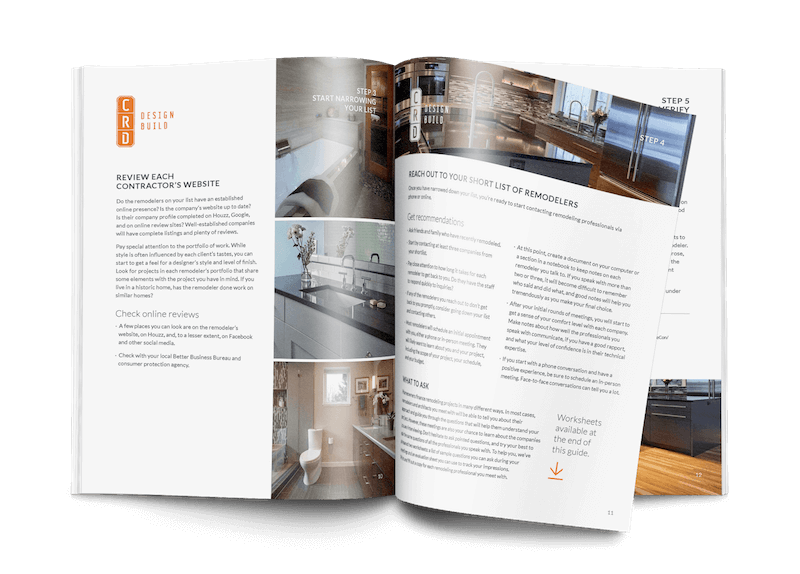
The exterior of your home bears the brunt of the elements, but your home's interior is also prone to wear and tear. Follow this handy maintenance checklist to keep your home operating smoothly. By staying on top of these basic preventative maintenance tasks, you could save yourself thousands of dollars in repairs.
Inspect
- Chimney: If you have a wood-burning fireplace, be sure to have your chimney inspected once a year, especially if you burn softwoods, like pine or cedar. Creosote can build up in your chimney and catch on fire, posing a serious risk.
- Pests: Don't let pest infestations get out of hand. Grab a flashlight and head to your basement or crawl space. Be particularly vigilant for the presence of carpenter ants and termites. Look for tiny holes in wood, piles of wings, damaged wood, and buckling paint. If you suspect an infestation, call a pest-control professional.
- Heating and cooling systems: Find a good HVAC company and schedule an annual inspection of your furnace and air-conditioning systems and perform annual maintenance tasks.
- Water intrusion: Check your basement for leaks. Keep a careful eye out for water stains or drips in your ceilings or along your walls. Avoid costly and damaging problems like mold and mildew by repairing any leaks you spot immediately.
- Plumbing fixtures: Check for dripping faucets and toilets that never stop cycling water. It could save thousands of gallons of water over the long run.
- GFCI outlets: Test your ground-fault outlets by pressing the "Test" button and then resetting. You should have these life-saving outlets installed in any wet locations in your home, such as the kitchen and bathrooms. If you have an older home, make sure to have GFCI outlets installed.
- Water softener: Check the tank and add salt as needed. If your family uses a lot of hot water, you may have to refill the tank frequently. Choose a high-purity evaporated salt to avoid mineral buildup at the bottom of the tank.
- Hoses: Inspect the hoses connected to your washing machine, dishwasher, toilets, sinks, and refrigerator. Fix any leaks you spot immediately.
- Test sump pumps: If you have sump pumps to keep your basement dry, test them regularly to make sure the float switch is working. Don't wait to find out it's not by discovering you have a flooded basement.
Seal
- Showers, tubs & sinks: The caulk around wet areas is prone to failure. Replace any caulking that is peeling away or discolored by mildew.
- Grout: The grout between your tiles can chip or fall out, allowing water to intrude and causing all sorts of damage. Inspect your grout regularly and re-grout immediately if it is damaged. Pay special attention to tile flooring in bathrooms and shower surrounds. Even grout in good condition should be resealed regularly to prevent staining. When you go to re-grout, consider more durable and stain-resistant epoxy grout.
- Windows and doors: Inspect and replace damaged caulk around windows and doors. Painter's caulk around baseboard can also pull away from your walls and can be easily touched up for a clean look.
- Touch up walls: Fill any holes or dents in your walls and on your trim and touch up with matching paint.
Clean
- Furnace filters: Some furnace filters are designed to be cleaned regularly. Others are meant to be thrown out and replaced.
- Fans: Clean and vacuum fan blades in your bathroom vents, refrigerator, and range hood.
- Carpet: To maximize the life of your carpet and keep contaminants from building up in your indoor environment, vacuum regularly. Have your carpets and rugs professionally cleaned annually.
- Range hood: The purpose of your range hood is to trap grease from cooking, and it will eventually get clogged. Clean the removable filters and scrub them down with a de-greasing soap and very hot water.
- Vacuum vents and fans: Clean dusty buildup from your heat registers, return air vents, refrigerator coils, and bathroom exhaust fans. Be sure to clean off both the fan blades and vent baffles for optimal performance.
- Clean dryer vent: At least once a year, you should inspect and clean the lint buildup in your dryer vent and make sure the baffles on the outside of your house are operating correctly. This helps your dryer operate more efficiently and reduces your risk for a fire.
- Unclog faucets: Minerals in your water can build up in the tiny aerator screens in your faucets and reduce flow. Remove them and soak in vinegar for a few hours, then scrub with a brush.
Service
- Lubricate: Make sure your door hinges, patio door tracks, window tracks, doorknobs, and locks are operating smoothly by following the manufacturer's instructions for applying a light lubricant.
- Water heater: Drain and flush your water heater every year to remove any sediment buildup in the bottom. Replace zincs as needed, and check to make sure the pressure valve is working.
- Tighten: Grab a screwdriver and tighten any loose doorknobs, handles, and drawer pulls.
- Smoke detector: Replace your smoke and carbon-monoxide detector batteries annually with high-quality alkalines. The last thing you want is to hear that annoying low-battery warning chirp in the middle of the night.
See also: Maintenance Checklist: Your Home's Exterior
STARTING A REMODEL
Maintaining your home is the first step, but you may be looking at changing and upgrading it as well. Our team here at CRD has decades of experience renovating older Seattle homes and will take care of issues caused by deferred maintenance in the process. If you are interested in discussing your unique situation, please don't hesitate to get in touch.
Note: We make no claims or warranties as to the completeness or accuracy of the information on this page. We encourage you to confirm all information you read here. Any action you take based on the information on this website is strictly at your own risk.
Guide to Hiring a Remodeler
This comprehensive guide walks you through all the steps of choosing who will design and build your project, vetting remodeling companies, and ensuring that you have the best experience.



